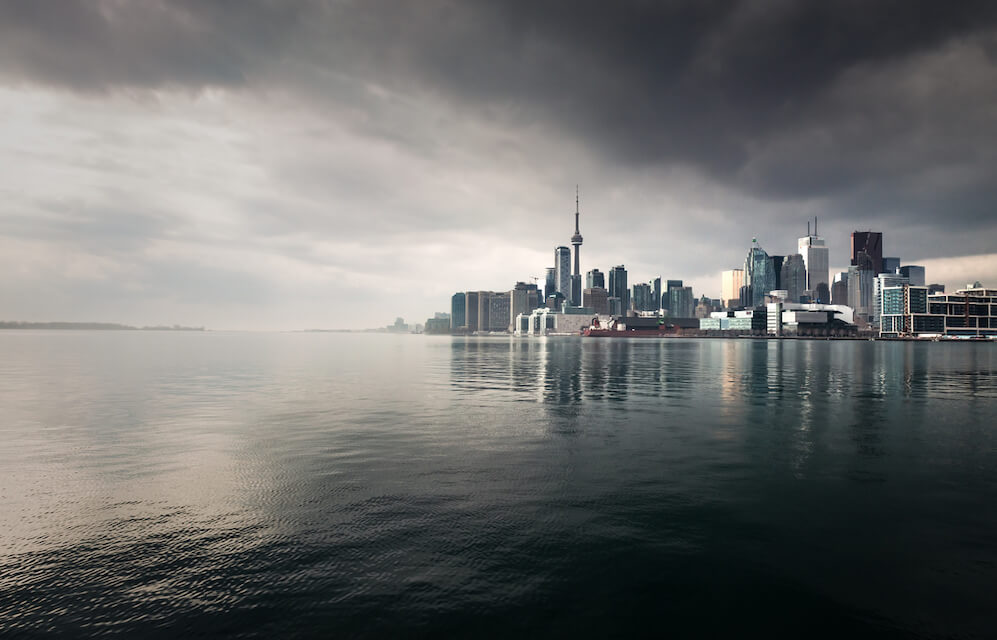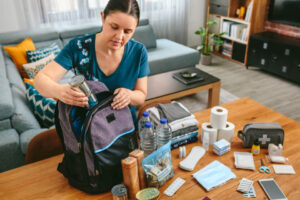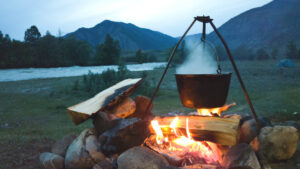
Imagine this: Heat and electricity are off. Tap water is not running or is tainted and not drinkable. Grocery store shelves are empty from panic purchases or looting. And you’re left to survive in a big city.
Crises can strike anywhere and anytime — from natural disasters like wildfires and hurricanes to something else entirely. With over 50% of the world’s population living in large cities, city prepping is a must.
Learn how to create your own urban survival plan — even in a large city — with these urban survival tips.
What Makes Urban Prepping Harder?
In rural areas, you’re better set up for survival. You likely have a large backyard for gardening and lots of storage space. You may also have tons of nearby woods to disappear into. But if you live in a city with blocks of concrete, distant nature, and a tiny apartment, things are… different.
A few differences between urban and rural prepping include:
- Less space for storage. It may be harder to store the items you need to survive.
- Fewer resources: Water, food, and survival gear can run out faster in urban communities.
- Less wildlife and water sources: It’s harder to hunt and live off the land.
- Less safety and security: With more people around, it’s harder to avoid things like home invasions, looting, and carjackings.
- Greater population density. More people equals more competition. Getting the things you need to survive is harder, leading to conflicts and more safety threats.
Wilderness survival skills like hunting and building shelter are great skills to have. But they may not be as useful in an urban survival environment. Improve your urban survival skills with the following tips.
Urban Prepping Techniques
1. Explore Your City
Learning the ins and outs of your area is crucial in any survival situation. But it’s even more important when living in the city. Explore your area and its pros and cons. Take note of intersections and back alleys. And learn how to travel without using main roads.
In certain disasters, your cell phone may not work. So, don’t rely on apps and devices to get you around. Instead, learn what you can, and mark it on a map.
2. Household Training
You know the area now. Now, it’s time to ensure you and your family are prepared for anything. Learn the skills you need to survive in an urban environment.
- First-Aid training
- Personal protection (i.e., martial arts, firearm training, self-defense)
- Physical fitness
- Situational awareness training
3. Create a “Get Out of Dodge” Plan
It’s not always possible to evacuate an urban area during an emergency. But it’s still important to find a bug-out location — out of the city — in case you can leave. Plan your routes, plan alternative routes, and prepare to protect yourself if needed while moving to the next location.
4. Make a Stay-in-Place Plan
In some situations, you may have no choice but to hunker down at home. If that’s the case, it’s likely that some urban comforts are out the window.
Utility systems like heat, water, and electricity could fail. Grocery stores may be low on the things you need to survive. So, you’ll want to plan ahead for riding things out in the area. The tips below may help.
5. Create a Communication Plan
It’s not always possible to foresee a crisis. So, ensure that you and your family have a communication plan in case you’re separated when disaster strikes. You may also want to decide on a meet-up location should communication attempts fail.
6. Find Space in Your Home for Survival Items
Many urban dwellers don’t have a lot of extra space. So, it’s crucial to use every bit of space you have available. Here are a few tips to help get you started.
- Opt for multipurpose tools. Avoid buying many items when you could get one that does more jobs (i.e., 4-in-1 radios and bleach).
- Buy furniture with extra storage. Buy furniture that can also hold survival items. Think beds or tables with built-in storage.
- Make good use of storage spaces. Use every bit of your closets, containers, and more. Add shelving where needed.
Some survival items you may want to keep on hand include:
- Solar cooker
- Heating sources that don’t make noise or bright light
- Generator
7. Build Your Food Supply
To be as prepared as possible, build a food supply kit. But if you live in an urban setting, you likely live in a space with little room for large stashes. Luckily, it’s possible to do more with less.
Here’s how to choose emergency food wisely.
- Find food that doesn’t need to be refrigerated. You still need space for daily life.
- Prioritize high-calorie options like dried meat and peanut butter.
- Opt for dry food that takes up less space and lasts a long time instead of bulky canned food.
8. Build Your Water Supply
In case utilities like water stop working during a crisis, you’ll want to be ready. After all, you’ll need water for flushing toilets, hygiene, and drinking. To stash water in a small space, store bottled water in a closet or pantry. If you don’t have enough room to spare, stock purifying water filters and water storage containers instead.
Pro-tip: Fill tubs, sinks, and any available container in your home with water before a crisis, if possible. This is a quick way to increase the amount of water you have on hand.
9. Pack Urban Clothing
In an urban survival situation, you’ll want to keep a low profile and make sure you don’t draw unwanted attention. Stash clothing that’s discreet, protective, and fitting for the climate.
10. Build a Bug-Out Bag
Of course, you can’t forget your bug-out bag. This should be ready to go in a snap. Emergency supplies you may want to have on hand include:
- First-aid kit
- A defense weapon
- Basic tools
- Power banks
- Fire starter
- Extra clothing
- Snacks like food bars, nuts, and dried meat
11. Prepare for Home Safety
It’s not great to hear, but safety is a major concern during emergencies in the city. Urban preppers need to be prepared. Long, drawn-out disasters could lead to looting and violence. Blackouts could cause higher crime rates.
Make sure you have the tools to protect your household should outside dangers move closer to home.
- Defense items: guns, tasers, folding knives, or pepper spray.
- Communication tools: walkie-talkies and solar radios to stay informed.
- Extra Locks: for added protection against unwanted entries.
- Boarding supplies: wooden planks, duct tape, paracord, and more to secure entry points.
12. Bug Out Your Vehicle
It’s important to keep your car stocked with everything you’ll need at a moment’s notice. It should also be well-maintained and ready to go. A few things you’ll want to keep in your car in case of an emergency include:
- Extra food
- Extra water
- Warm clothing
- Spark plugs
- Extra tires
- Extra car battery
- Jumper cables
- Tool kit
- Traction aids like sand or kitty litter
- And more
Want to learn more? Read our blog on how to bug out your vehicle.
Ready to Start Prepping for Urban Survival? Do it with 4Patriots
Ready to start urban prepping? Turn to 4Patriots for help. From emergency candles to nutritious survival food kits, we have the gear you need to fulfill your emergency preparedness plan. Shop online today!

